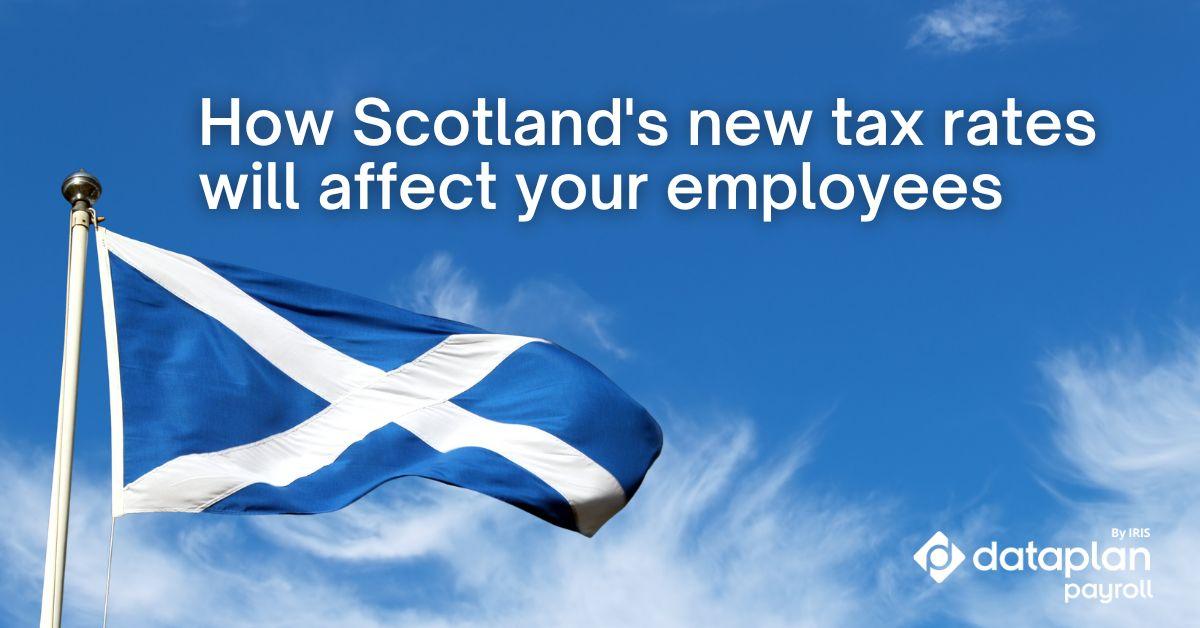
As I’m sure many reading this will know, Scotland has five tax rates you must consider when processing pay, as opposed to three used by England and Wales.
Now, crucially, some of those rates have been changed for 2023-24.
Managing pay for staff across the UK means another spinning plate for those managing payroll – one that can prove tricky for the ablest accountant or in-house team. So, to help you, this update includes what you need to know and shows what will happen to people’s pay in Scotland as well as England and Wales.
Why income tax rates will change in Scotland
The Scottish Government says that a change in rates will help deliver a £1 billion uplift for NHS funding and other services.
So, what are these changes? First, the Scottish Government is adding one penny to the higher and top tax rates. Second, it will drop the threshold for the top rate from £150,000 to £125,140 while holding the higher rate threshold where it is. This, it says, will raise a further £519 million.
What this looks like in practice
Here is a quick overview of the 2023-24 rates. The new percentages have been highlighted:
| Income | Rate type | Percentage taxed |
|
£12,571 to £14,732 |
Starter rate | 19% |
|
£14,733 to £25,688 |
Basic rate | 20% |
|
£25,689 to £43,662 |
Intermediate rate | 21% |
|
£43,663 to £125,140 |
Higher rate | 42% |
|
More than £125,140 |
Top rate | 47% |
It’s a small number of changes, but they have a significant effect. Let’s look at some examples, comparing how pay for a person living in Scotland will differ from those in England and Wales.
Examples
For those earning £35,000
For staff in England and Wales, the tax rates are relatively straightforward: once you deduct the personal allowance of £12,570, that leaves £22,430. This is taxed at 20 pence in the pound, meaning people will pay £4,486 in tax annually.
In Scotland, you have the same personal allowance and so the same taxable amount of £22,430. The starter rate is between £12,571 and £14,732, making £2,161 taxable at 19%. Then there is the basic rate (between £14,733 and £25,688), which means £10,955 will be taxed at 20% before the remaining £9,314 is taxed at the intermediate rate of 21%. Following all calculations, a person will pay £4,557.53.
For people earning £70,000
As the personal allowance is the same, staff in Scotland, as well as England and Wales, are all taxed on £57,430 of pay.
In England and Wales, two bands apply: £37,430 is taxed at 20%, and £20,000 is taxed at 40%. This means people will pay £15,486.
In Scotland, £2,161 is taxed at 19%, £10,955 is taxed at 20%, £17,973 at 21%, and the remaining £26,341 is taxed at the higher rate of 42%. People will pay £17,439.14.
For people earning £100,000
The taxable amount is £87,430 once personal allowance has been deducted.
In England and Wales, two tax rates come into play (20% for £37,450 and 40% for £50,000). As a result, people will pay £27,486 in tax.
In Scotland, the first four tax bands are taken into account, with the higher rate payable for £56,341. They will pay £30,039.14.
For people earning £200,000
Across the UK, it is important to remember that anyone earning more than £125,410 loses their personal allowance – so in this case, all earnings are taxable.
In England and Wales, the first £50,000 is taxed at 20%. The next £75,140 will be at 40% and the last £74,590 at 45%. In total, people will pay £73,621.50 tax.
In Scotland, all five tax rates have to be considered. So, £2,161 will be taxed at 19%, £10,955 at 20%, £17,973 at 21%, £94,051 at 42% and £74,860 at the top rate of 47%. People will pay £81,061.54 in tax.
Dealing with this complexity
The change to Scotland's tax rates is a healthy reminder that we must remain constantly aware if we have a UK-wide workforce. Adjustments to tax rates can be overlooked, and it is easy to underestimate the complexity of every country’s system.
This is even more relevant now many businesses have become less confined to physical office spaces, and the door has opened to a broader pool of talent.
But don’t suffer in silence; payroll is challenging. You should instead ask yourself: is this a challenge I need to take on? Many accountants, for instance, want to focus on delivering better advisory services, and payroll can add a needless burden. Meanwhile, for in-house staff scrambling to look after wages for a growing workforce, it can be too much of a distraction.
If you need help, Dataplan is here. We can give you advice and offer complete outsourcing solutions – call us now for more information.
Dataplan are one of the UK’s leading providers of specialist payroll and associated services.
From payroll outsourcing and pension service management to ePayslips and gender pay gap reporting; we have a solution for you and your business.
